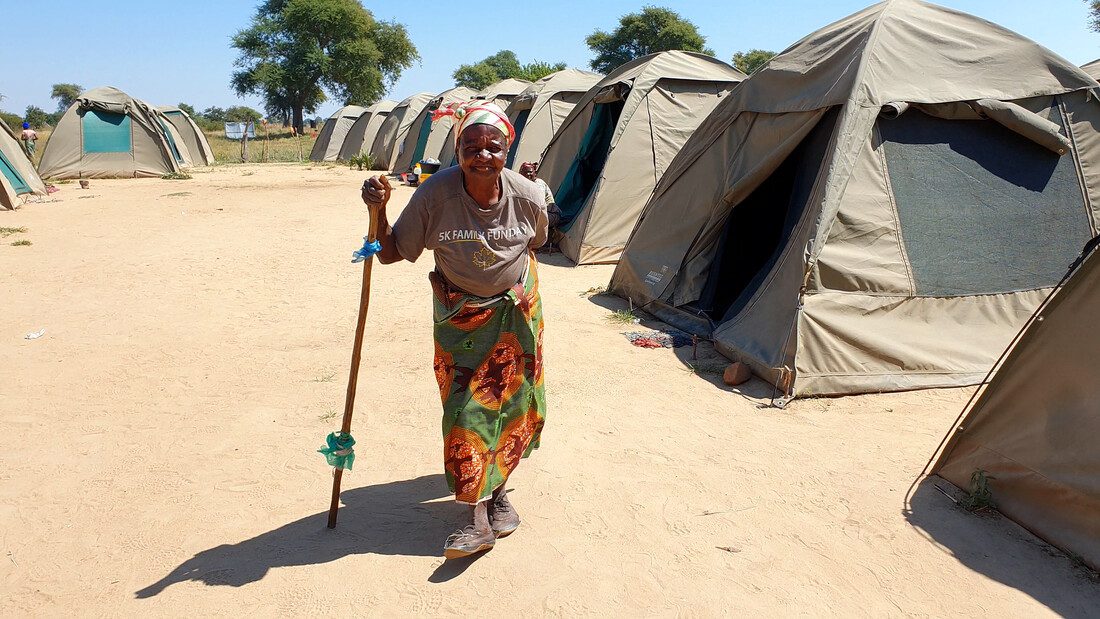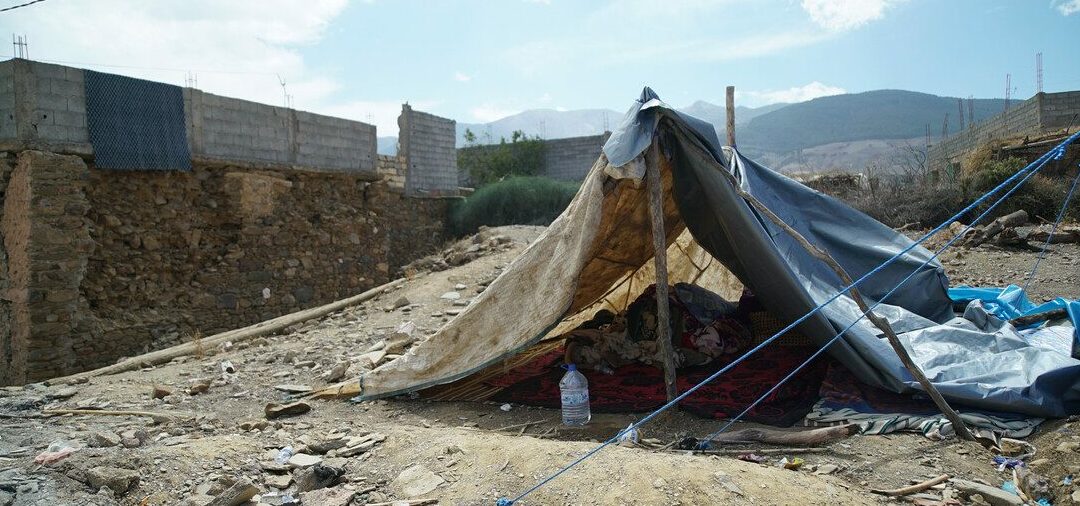By Denise Schneider
The floods come suddenly. The water announced itself with a rumble in the middle of the night. Chuma Mwende and her five grandchildren are in their house when they are surprised by the water. They don’t know where it is coming from, only that they must leave as quickly as possible. As neighbours pull them onto an ox cart, they watch the flood engulf the houses around them.
“Our house submerged,” Chuma recounts.
In search of dry land, she and her neighbours discovered a field about two kilometers from their village. In Zambia, people like Chuma and her grandchildren are feeling the consequences of the climate crisis brutally and clearly: the dry seasons are getting longer, the soil is drying out. Heavy rainfall during the rainy season has increased over the past few years. Again and again, dams break, unable to withstand the tons of water, and floods everything. The waters sweep away villages and animals and destroy fields and plants. In Zambia, a large part of the rural population makes a living from agriculture. They depend on the weather and their crops. The climate’s unpredictability makes food and money increasingly uncertain.
Chuma can only walk on a stick that reaches her shoulders. Her back is hunched.
“We have lost everything. At my advanced age, it’s difficult to move and I don’t know how to find food for my grandchildren,” Chuma says.
Instead of enjoying her retirement, she is the sole caregiver for her five grandchildren. Her own children have all passed away. The youngest, six-year-old Nchimunya, never leaves her grandmother’s side. When they left their home, they did not have the opportunity to pack anything. They came to the field with only the clothes they were wearing. The family has been living in a camp since January, together with 640 other people. Among them are 347 children. In total, almost 375,000 people have been affected by the floods in Zambia between January and March 2023.


Denise Schneider/CARE
Initially, people who have been displaced gathered plastic bags and long sticks, which they tied together to make a makeshift shelter. For four days, the people were to hold out here while the rain continues. Then representatives of the government of the Disaster Management and Mitigation Unit (DMMU) exchanged the plastic shelters for real tents.
CARE distributed blankets, solar lamps, water tanks, pots and buckets. For Chuma and the others, the tents are their only shelter. Up to 16 people live in one tent—often two households live together. Currently it is over 30 degrees in the camp, the rain has stopped and the drought will soon follow, the fields are already drying up. There are no trees to provide shade, the heat in the tents is unbearable.
Chuma’s daily life in the camp revolves around finding food for herself and her grandchildren. In the morning the children look for firewood and Chuma prepares porridge for them. In the afternoon and evening they eat whatever else they can find. Sometimes neighbours step in and help Chuma’s family, or the children forage for sweet potatoes in the fields and fish in the river nearby. There is never any certainty that there will be enough for the next few days. Worry about the next meal accompanies many people in Zambia. Half of the population does not have enough to eat. Zambia is one of the countries with the highest malnutrition rate in Africa. Children are particularly affected—more than one in three children under five years has stunted growth.
“I want a home again where I can raise my grandchildren.” Her granddaughter agrees, looking shyly at the ground: “We want food and a home.”
– Chuma Mwende
How CARE helps:
CARE is providing emergency relief to people affected by the floods in Zambia. With cash, food and other items like blankets, solar lamps, water tanks and buckets, CARE is helping displaced people who have no home and few financial resources. CARE’s long-term projects focus on supporting people as they become resilient to climate impacts, for example with reforestation projects, drought-resistant seeds and training on nutrition and health.




